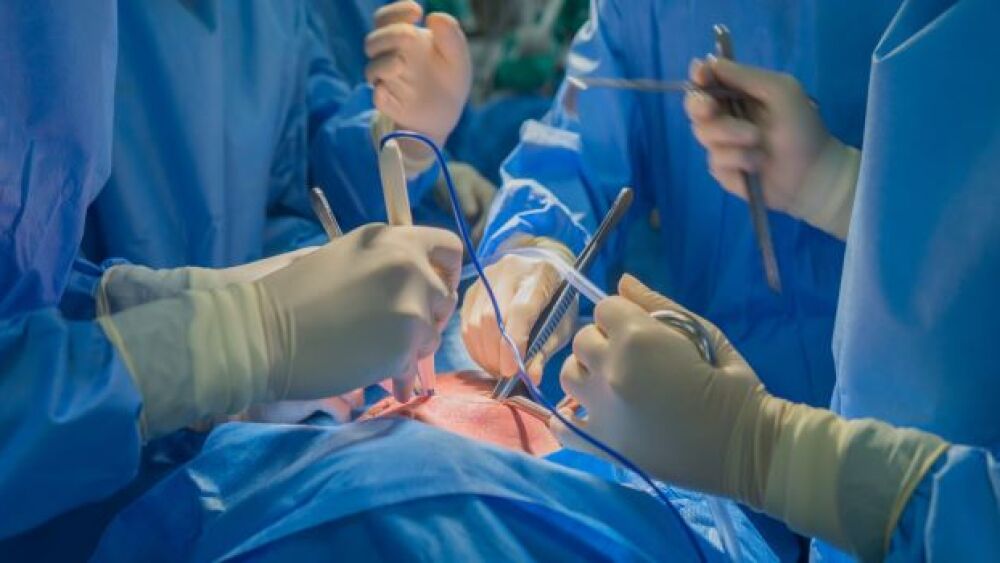Physicians at New York University have successfully implanted pig hearts into the bodies of patients that were living but no longer showed neural function, a process called xenotransplantation.
Physicians at New York University’s (NYU) Langone Health have successfully implanted pig hearts into the bodies of patients that were living but no longer showed neural function in a process called xenotransplantation.
This procedure marks the latest in an ongoing effort to relieve the strain placed on organ shortages in the United States and globally due to the COVID-19 pandemic.
It’s the latest in a series of experimental attempts to find out if pig heart transplantation into human bodies is possible, without harming the patient’s quality of life. NYU doctors conducted the procedures on June 16 and July 6.
The procedures were conducted using genetically modified pig hearts harvested from a specialty facility, while the recipients remained supported by ventilators. This experiment was seen as a success for xenotransplantation research. The state of the transplant recipients allowed the physicians to familiarize themselves with aspects of the procedure that are hindered when living patients with neural activity are involved.
These implantations follow two previous pig-to-human heart transplantation procedures in an attempt to lend a hand to science.
These most recent procedures follow implantation in a patient who received a pig heart transplantation at the University of Maryland earlier this year. Despite initial reports that the transplanted organ was successfully accepted, mysterious circumstances caused the man’s death two months after the procedure. Cytomegalovirus was later identified in the pig heart and may have contributed to the casualty.
Another possible factor could be the size difference in the transplanted organ versus what is normal for a man of the patient’s height and weight. The ultimate cause of death was found to be oxygen deprivation. During the procedure, the operating surgeon noted other anatomical differences in important features such as the blood vessels.
In one of the more recent surgeries, a woman received a pig heart that was roughly the correct size physiologically. The other recipient was Lawrence “Larry” Kelly, 72, who had a heart attack while driving, causing his brain to be deprived of oxygen for an extended period of time.
In both situations, the living recipients were monitored for three days for any signs of rejection. To the physician’s excitement, the recipients appeared healthy during this monitoring period.
Dr. Nader Moazami, the surgeon who has been involved in every step of NYU’s xenotransplantation endeavor, told USA Today that the operations are important “to make sure we learn as much as we can before we do it in a clinical setting” because “most of what is known is all in non-humans.”
“We want to go into the Phase I trials with as much information as we possibly can have,” Dr. Robert Montgomery, M.D. DPhil, professor and chair of the department of surgery at NYU Grossman School of Medicine and director of the NYU Langone Transplant Institute, told USA Today.
Heart disease remains the most common cause of death in the U.S. Preventative and reactive care for heart disease places an estimated $363 burden on the healthcare system. One in every four deaths is ultimately attributed to the disease.
The Organ Procurement and Transplantation Network, in association with the U.S. Department of Health, reports that the current waitlist has over 116,000 patients registered and waiting for a transplant. Some of those in the queue have been waiting over five years. While the news out of NYU is limited to heart organ donation, success in this realm could open up a vast array of options for those in need of other organs.
Animal rights activists have spoken up regarding the use of pig organs, saying they wouldn’t be needed if more people signed up to be organ donors. But since there is a shortage of donors, pig hearts have potential benefits. Anatomically similar, the human and pig heart each have four chambers, complete with two atriums, two ventricles and an aorta. With genetic manipulation, the pig heart can be reprogrammed to negate particular functions and acquire more human-centered traits.
Experimental treatments and procedures come with a high degree of risk, as the nuances are not yet ironed out. Ethical considerations don’t allow for common-type clinical trials, given the importance of the heart organ. Despite the ethical challenges, if successful, xenotransplantation could be revolutionary for the medical community and patients with cardiac diseases or other medical conditions that affect heart function.





